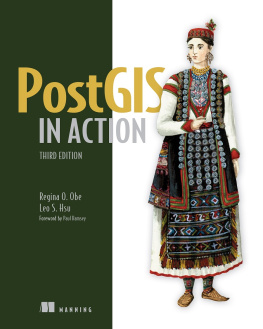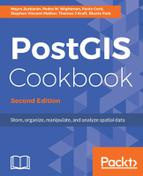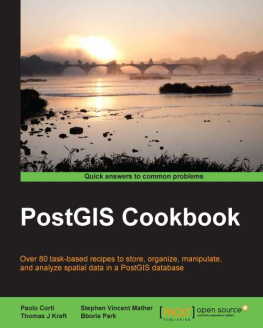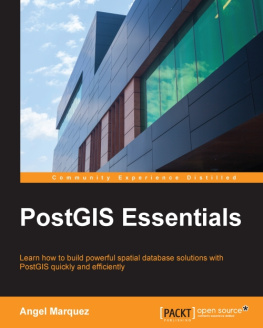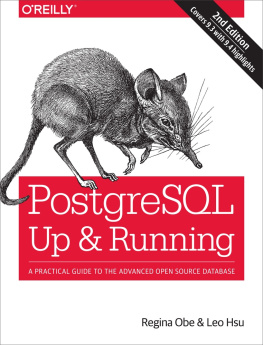front matter
foreword
As children, we were probably all told at one time or another that we are what we eat, as a reminder that our diet is integral to our health and quality of life. In the modern world, with location-aware smartphones in our pockets, GPS units in our vehicles, and the internet addresses of our computers geocoded, it has also become true that who we are is where we areevery individual is now a mobile sensor, generating a ceaseless flow of location-encoded data as they move about the planet.
To manage and tame that flow of data, and the parallel flow of data opened up by economical satellite imaging and crowdsourced mapping, we need a tool equal to the task. A tool that can persistently store the data, efficiently access it, and powerfully analyze it. We need a spatial database, like PostGIS.
Prior to the advent of spatial databases, computer analysis of location and mapping data was done with geographic information systems (GISs) running on desktop workstations. When it was first released in 2001, the project name was just a simple play on wordsnaturally a spatial extension of the PostgreSQL database would be named PostGIS.
But the name has come to have further significance as the project has matured. Each year, new functions have been added for data analysis, and each year users have pressed those functions further and further, doing the kinds of work that in earlier years would have required a specialized GIS workstation. PostGIS is actually creating a world that is post-GISwe dont need GIS software to do GIS work anymore. A spatial database suffices.
In March of 2002, not even one year after the first release of PostGIS, I asked on the user mailing list for examples of how people were using PostGIS.
In her first post to the list, Regina Obe answered this way:
We use it here [city of Boston] for proximity analysis. Part of our department is in charge of distributing foreclosed property to developers, etc., to build houses, businesses, etc. We use PostGIS to list properties by proximity ... so that if a developer wants to develop on a piece of land that is, say, X in size, they will be able to get a better sense of whether it can be done.
Even at that early date in the project, Regina Obe was already testing the capabilities of PostGIS and creating clever analyses.
Since PostGIS in Action was first released in 2011, PostGIS has itself remained very much in action, adding new features for raster analysis, 3D, clustering, temporal data, topologies, and more. And the world has kept on moving too.
Almost two decades ago, when PostGIS was brand new, the idea that almost every person would have a GPS unit (a phone) in their pocket was pretty crazy, and now its commonplace. The features of PostGIS for managing location are now being used widely by developers who only a few years ago had never heard of spatial data.
Over the last few years, satellite and aerial imagery have moved into the mass market, drone systems are commonplace, and location sensors are mounted on nearly any asset that moves. The amount of data to analyzeand the velocity and volume of that datais higher than ever.

